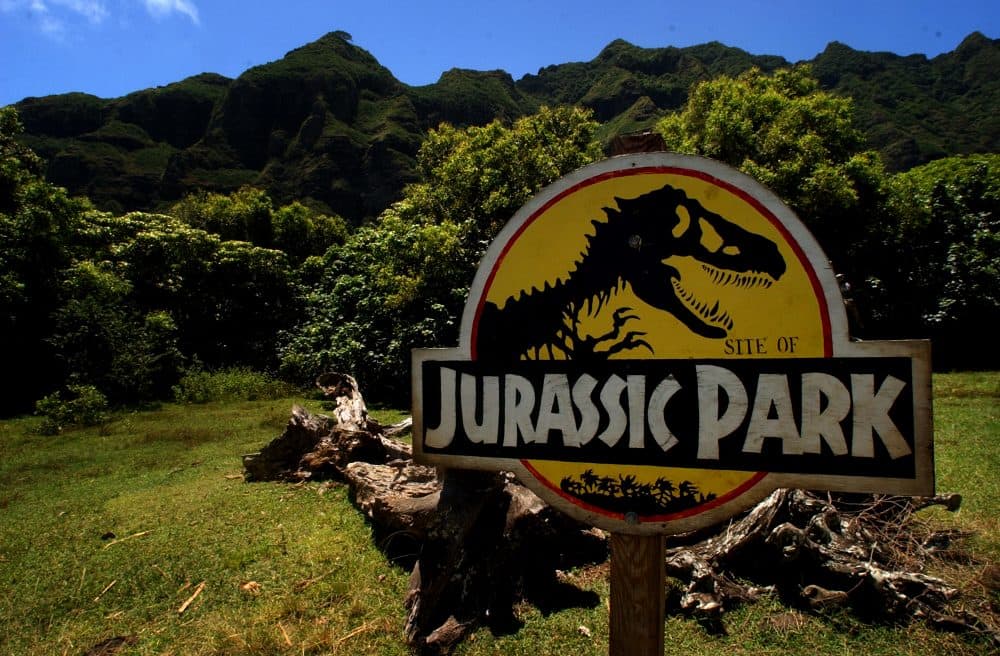Advertisement
'Jurassic Park's' Dinosaur Expert Looks Back 25 Years Later: 'They Were Very Realistic'
Resume
Steven Spielberg's "Jurassic Park" was released 25 years ago on June 11, 1993. The film helped redefine popular perceptions of dinosaurs, while earning three Academy Awards and $914 million in its original theatrical run. But after more than two decades of research, paleontologists have learned a lot about the long-extinct animals.
Here & Now's Jeremy Hobson speaks with Jack Horner (@dustydino), paleontologist and adviser to the film series, about the power of "Jurassic Park" and what has been discovered since its release.
Interview Highlights
On bringing dinosaurs to the big screen
"The times were changing. The movie came out in '93, and the change, sort of the new look and the new ideas about dinosaurs, had started back in the late '60s and really sort of got going in the late '70s. And by the 1980s, we did have a pretty good idea that dinosaurs were pretty special animals. And we knew then that birds were their descendants. So, the movie, then we were able to flesh them out a little better, but of course there were some constraints with technologies that didn't allow us to actually make them exactly the way we wanted to."
On comparing the dinosaurs from the original film to those in the new "Jurassic World" movies
"They were very realistic. And, in fact, we did a pretty good job of making the dinosaurs back in '93 look like we thought they should look, according to what we had known in 1993. Now we know that actually they're quite different. We know now that most of the meat-eating dinosaurs were feathered and they were probably much more colorful than we see them in the movies. But unfortunately, the storyline has to continue on. So we can't really change the movie stars. We can't change the dinosaurs really because we already made them."
On things he might change if he could go back and do it again
"Steven and I had quite a few arguments about what the dinosaurs should look like. Steven Spielberg. My job was to make sure the dinosaurs looked as accurate as they could, based on the science that we had. And we already knew that velociraptor and some of those kinds of little theropod dinosaurs were feathered. And we also knew that they could have been very colorful, and Steven, really, he didn't think Technicolor dinosaurs would be very scary. But there was also just technological constraints trying to render feathers at that point in time when computer graphics were just coming to be. Technicolor feather dinosaurs, they would not be as scary as what we ended up with."
"We did a pretty good job of making the dinosaurs back in '93 look like we thought they should look, according to what we had known in 1993."
Jack Horner
On debate over whether the T. rex was a hunter or a scavenger
"I've been one of the people that has pushed the whole scavenger business. And of course, it wouldn't have played such a big role in the 'Jurassic Park' movies as a scavenger. It is shown kind of as a scavenger in 'Jurassic Park III.' But I would, even now, I would argue that the T. rex was at least an opportunist, and it wasn't a top predator."
On whether he thought the film would become as iconic as it has
"No, and, in fact, Steven and I had a long discussion about whether the movie was even going to be popular. It seemed like it would. The dinosaurs are really cool, and the technologies were coming together pretty well, and the sets were great. Of course, before a movie is finished, you can't really tell what it's going to look like. But, Steven asked me twice, I remember twice on set him asking whether I thought that kids were going to like it and whether adults were going to like it. And, my answer always was, kids are always going to like it, because kids love dinosaurs. But, you know, I don't know how you get adults to like dinosaurs, and yet you know the movie did. It did it."
On the plausibility of one day being able to recreate dinosaurs from DNA
"One of my former doctoral students, Mary Schweitzer, she and I actually had a grant from the National Science Foundation to attempt to extract DNA from a dinosaur. And that was after we knew that it wasn't going to come out of amber. And, quite frankly, over the years, there have been several attempts to to extract DNA and it's never been found. There's a good chance that it will be found, but that the pieces are going to be so tiny that we probably won't be able to do very much with it. So my answer to that is, birds are dinosaurs, maybe we can retro-engineer one."
This article was originally published on June 11, 2018.
This segment aired on June 11, 2018.